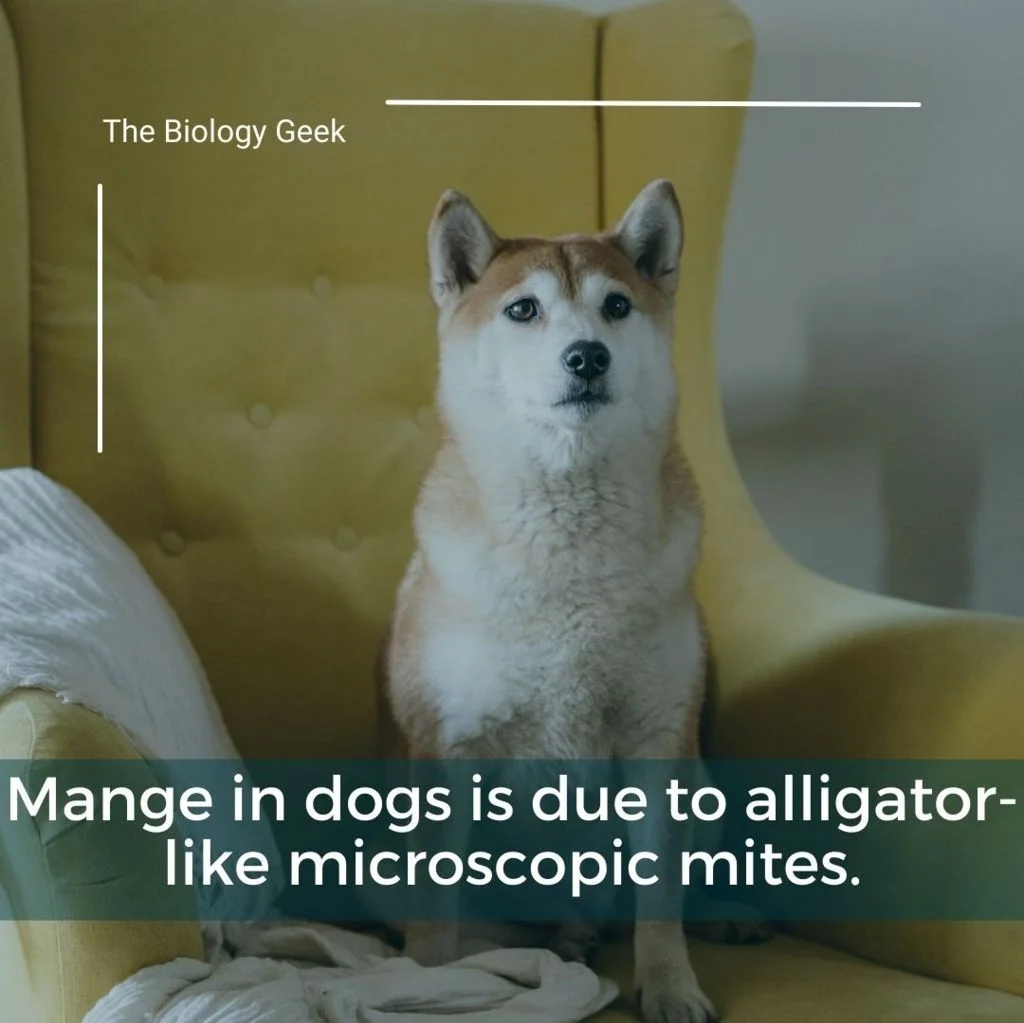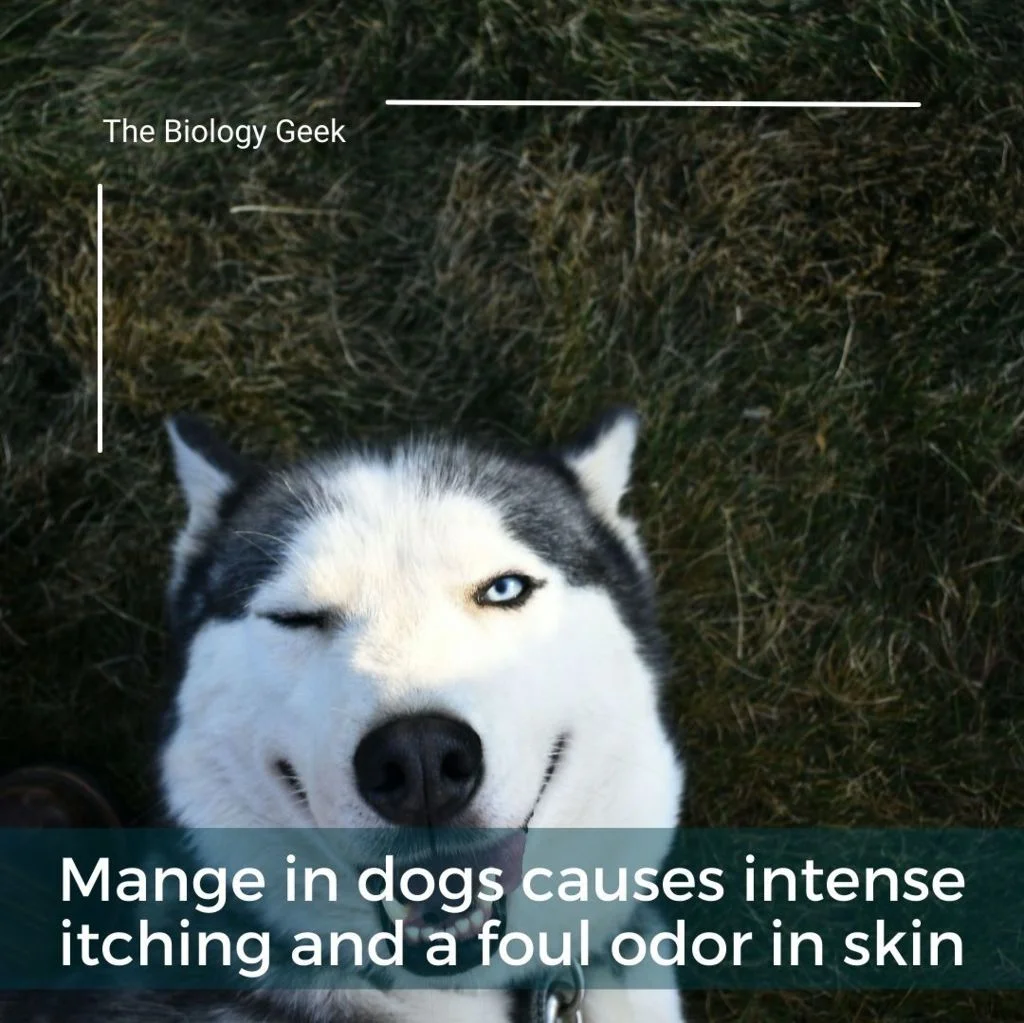Mange in a dog:
The skin condition “Mange in a dog” is due to several different species of parasitic mites. The mites embed themselves either on the dog's skin or hair follicles. Some species of mites does not cause a problem and they commonly live on the bodies of dogs. Many species of mites can cause a skin conditions if there are enough of them.

Demodectic mange or Red mage on dogs:
Demodectic mange in dogs is also naming as follicular mange, red mange, and puppy mange because it's most common among young dogs. Demodectic mange mites or demodex canis mite specie can cause this condition. These mites resemble minute alligators when you see them under the microscope. Their habitat is mostly inside the hair follicles of dogs. Demodectic mange is usually due to the suppressed or underdeveloped immune system.
It’s most often seen in young dogs with inadequate immune system responses. The Demodex mite is born, lives, and dies on the dog. They lay eggs then hatch the egg, and mature through stages to adulthood. Its entire life cycle is about 20 to 35 days.
Demodectic mites are transfer through direct contact from the mother dog to her puppies during their first week of life. The mites cannot survive off the dog. That’s why they move dog to dog directly through contact. There's no reason to treat a dog's living space or bedding for mites because the mites are all actually on the pet.
Demodectic Mange in a dog symptoms:
All dogs have a small population of these microscopic mites that naturally exist on them without any problems. Every mother dog ends up transferring demodex mites to her litter. Most puppies have no reaction to the mites. But some puppies that have weak immune systems can become overburdened by these mites. These are the pups that have symptoms of demodectic mange and there are three varieties of mange of demodectic mange.That can happen in :
- Localized Demodectic mange
- Generalized Demodectic mange
- Demodectic Poteau dermatitis
Localized Demodectic mange:
Localized Demodectic mange affects just a few body parts usually small patchy lesions around the face. This condition is most commonly seen in puppies and most cases actually resolve on their own without any treatment as puppies become immune-competent.

Generalized Demodectic mange:
Generalized mange affects the entire body or the larger areas of skin. This variation creates secondary bacterial infections that cause intense itching and a foul odor and can be very challenging to resolve. Dogs with generalized demodectic mange can become actually quite ill with a fever, loss of appetite, and lethargy.
Demodectic Poteau dermatitis:
Demodectic Poteau dermatitis is confining to the foot and creates secondary bacterial infections between the toes and the pads of the feet. It is the toughest of all three types to get rid of for dogs. Those dogs that have demodectic mange will be itchy. There’s also usually some hair loss, bald spots, scabbing, and sores that can occur on the skin.
In these cases, it is important that you see a veterinarian right away.
Diagnosis for the cat scratches infection:
Demodectic mange can confirm by the presence of a skin scraping or biopsy. The mites can't see with the naked eye so they must be confirmed using a microscope. The presence of demodectic mites doesn't confirm the diagnosis because obviously, the mites live on all dogs. There have to be mites present and Mange in dogs early sign has skin lesions. It is used for a diagnosis of domestic mange . In an adult or older dog, a diagnosis of Demodex should always prompt. Further testing is necessary for other diseases diagnosislike Cushing's disease, hypothyroidism, heartworm disease, cancer, or immune deficiency.
Can Demodex canis present in cats?
Demodex canis mites are not present or live on cats. Kitties have their own species of mites and they cannot transfer mange from dog to human.
Demodectic mange treatment in dogs:
It can be treated by regular sponge bathing of dog with hydrogen peroxide and Borax solution. It is a popular treatment for this skin disease. The mixture of borax and hydrogen peroxide help to heal the sores on skin of dog and it can also manage mites.